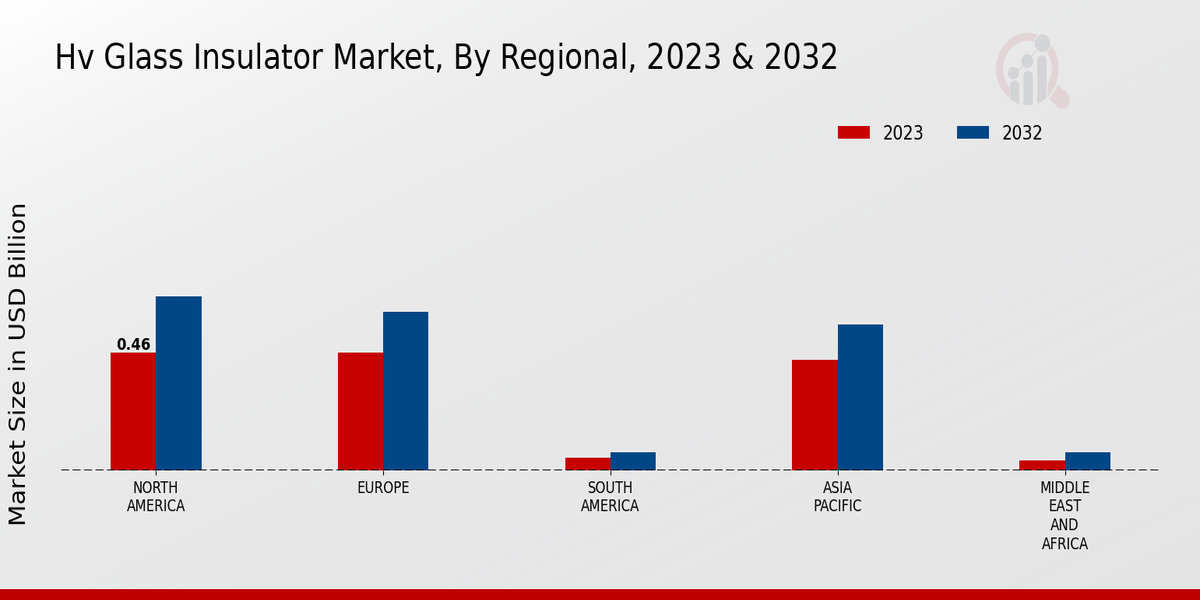Market Growth Projections
The Global Hv Glass Insulator Market Industry is poised for substantial growth, with projections indicating a market value of 1.55 USD Billion in 2024 and an anticipated increase to 2.32 USD Billion by 2035. This growth trajectory reflects a compound annual growth rate of 3.75% from 2025 to 2035. The market dynamics are influenced by various factors, including technological advancements, regulatory support, and the increasing demand for renewable energy. These projections highlight the industry's potential and the critical role of high voltage glass insulators in supporting the evolving energy landscape.
Growing Demand for Renewable Energy
The Global Hv Glass Insulator Market Industry experiences a surge in demand driven by the increasing adoption of renewable energy sources. As countries strive to meet sustainability goals, the integration of wind and solar energy into existing power grids necessitates reliable insulation solutions. High voltage glass insulators are essential for maintaining the integrity of these systems, ensuring safety and efficiency. This trend is projected to contribute significantly to the market, with the industry expected to reach 1.55 USD Billion in 2024. The shift towards greener energy solutions indicates a robust growth trajectory for the Global Hv Glass Insulator Market Industry.
Infrastructure Development Initiatives
Infrastructure development initiatives across various regions are propelling the Global Hv Glass Insulator Market Industry forward. Governments are investing in modernizing electrical grids to enhance reliability and efficiency. For instance, projects aimed at upgrading transmission lines and substations require high-quality insulators to withstand environmental stressors. This focus on infrastructure is likely to drive the market's growth, with projections indicating a market value of 2.32 USD Billion by 2035. The ongoing investments in infrastructure signify a sustained demand for glass insulators, reinforcing their critical role in the energy sector.
Increasing Urbanization and Electrification
The trend of increasing urbanization and electrification is a pivotal driver for the Global Hv Glass Insulator Market Industry. As urban areas expand, the demand for reliable electricity supply intensifies, necessitating the development of robust electrical infrastructure. High voltage glass insulators play a crucial role in ensuring the stability and efficiency of power transmission in densely populated regions. This growing urban demand is likely to contribute to the market's expansion, with projections indicating a steady rise in market value over the coming years. The interplay between urban growth and electrical demand underscores the importance of glass insulators in modern energy systems.
Regulatory Support for High Voltage Systems
Regulatory support for high voltage systems is a significant driver of the Global Hv Glass Insulator Market Industry. Governments worldwide are implementing stringent regulations to ensure the safety and reliability of electrical infrastructure. These regulations often mandate the use of high-quality insulators in power transmission and distribution systems. Compliance with these standards not only enhances safety but also promotes the use of advanced materials like glass insulators. The ongoing regulatory framework is expected to bolster market growth, as utilities seek to adhere to safety guidelines while upgrading their infrastructure.
Technological Advancements in Insulator Design
Technological advancements in the design and manufacturing of high voltage glass insulators are reshaping the Global Hv Glass Insulator Market Industry. Innovations such as improved materials and manufacturing techniques enhance the performance and longevity of insulators. These advancements not only increase reliability but also reduce maintenance costs, making glass insulators a preferred choice for utility companies. As the industry evolves, it is anticipated that the market will witness a compound annual growth rate of 3.75% from 2025 to 2035. This growth reflects the industry's commitment to adopting cutting-edge technologies to meet the demands of modern electrical systems.



















